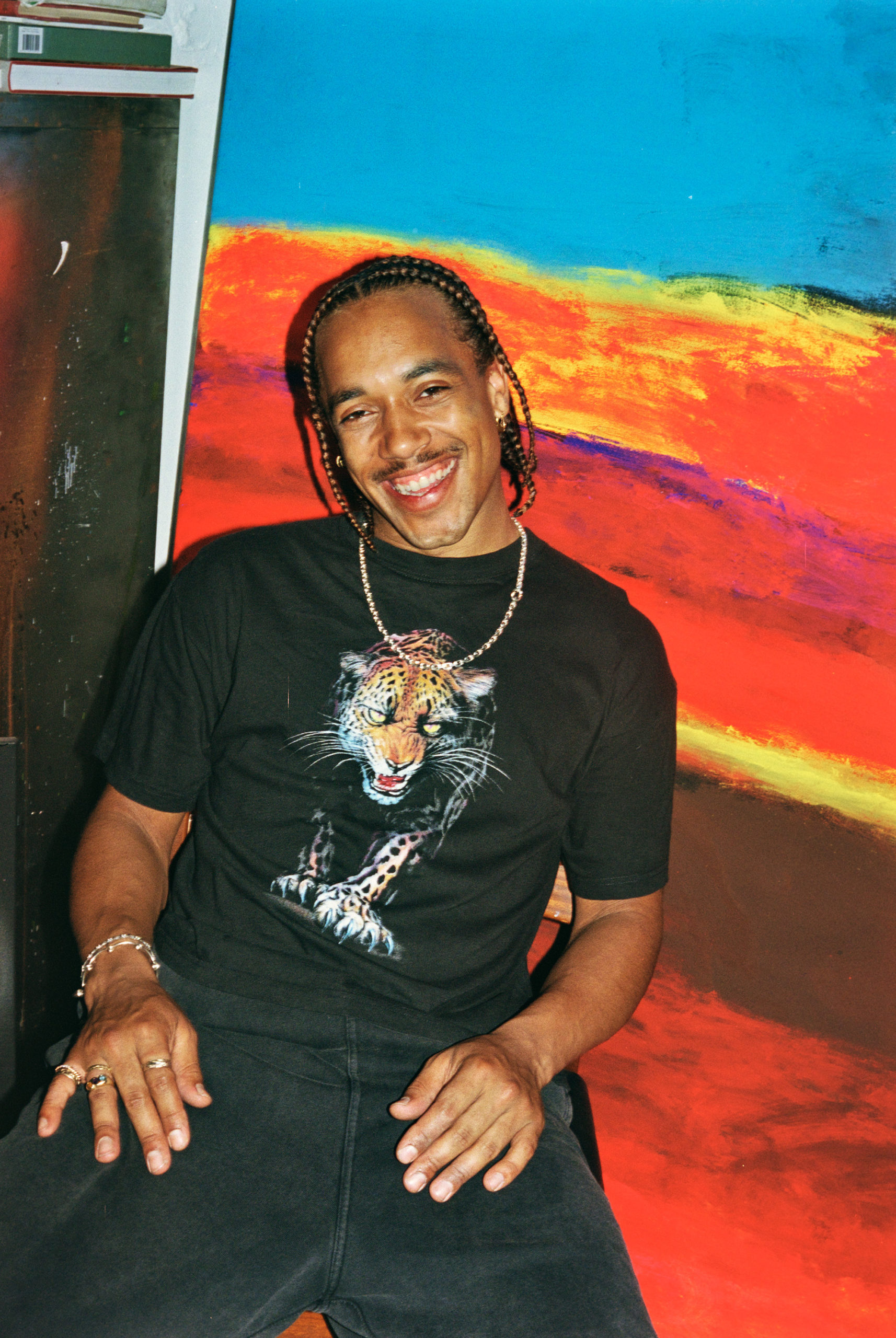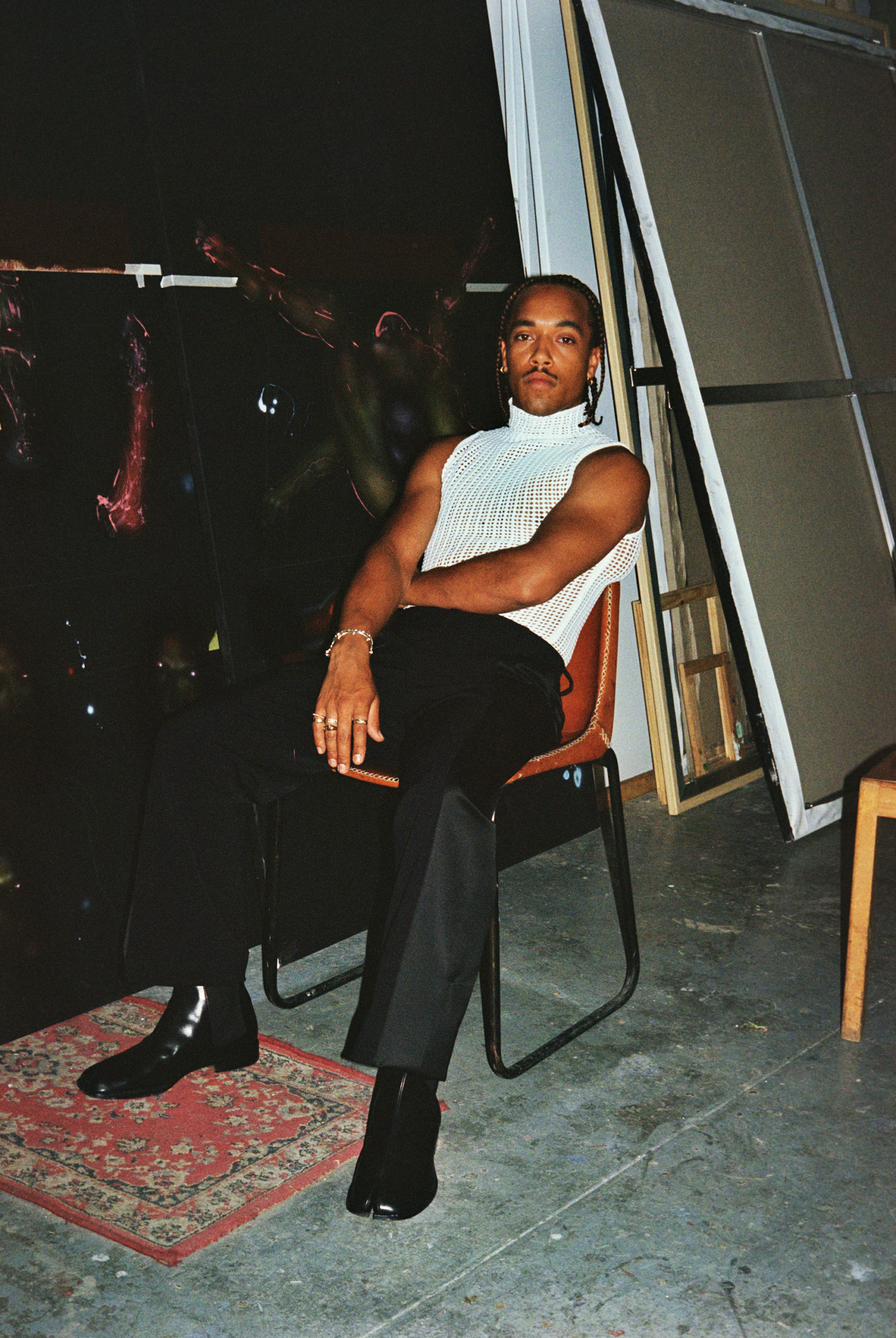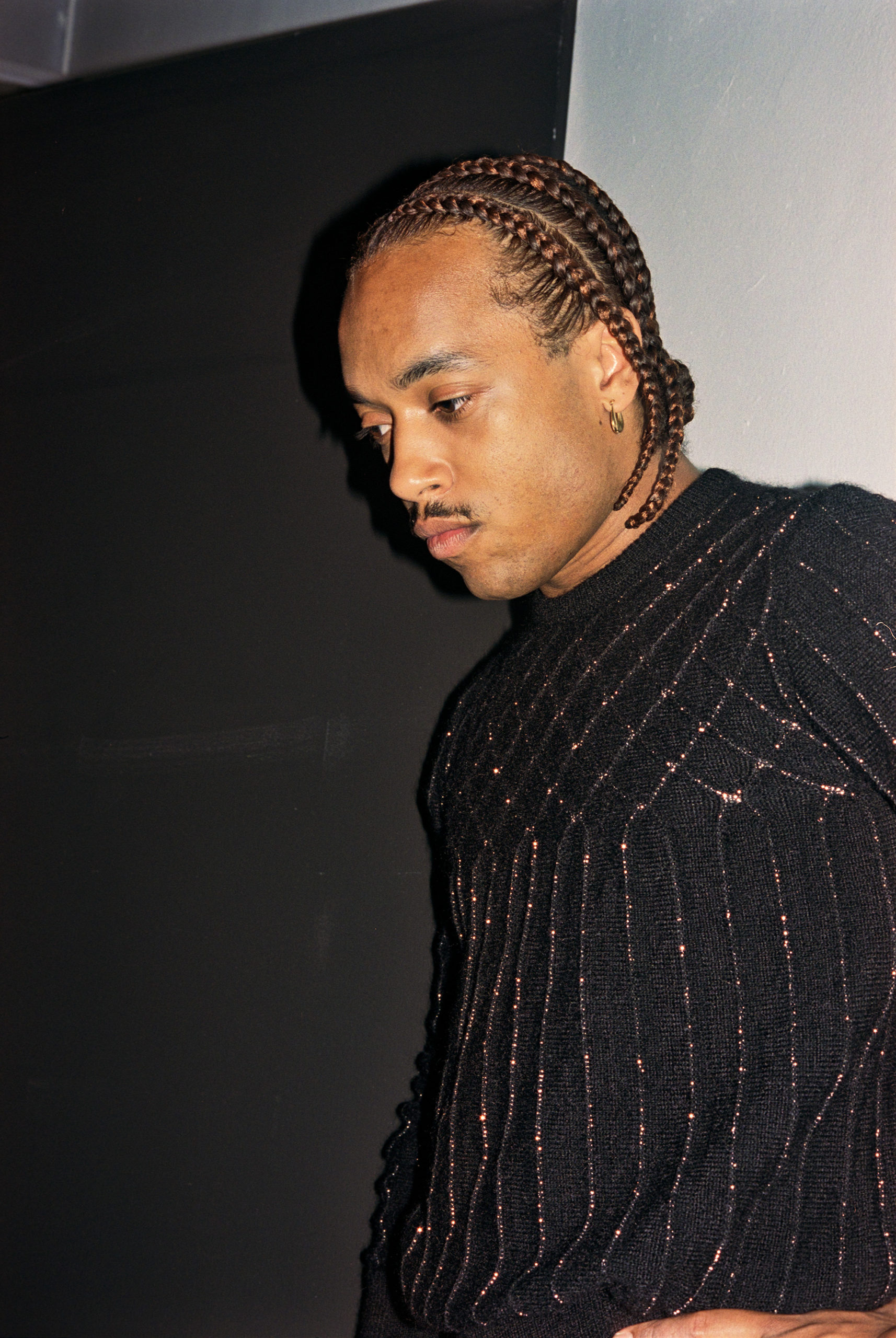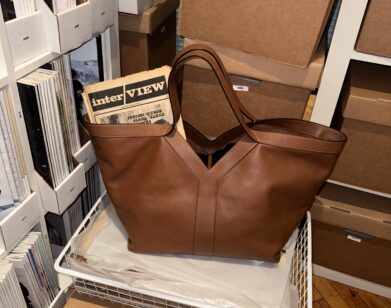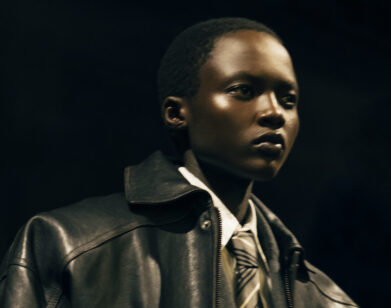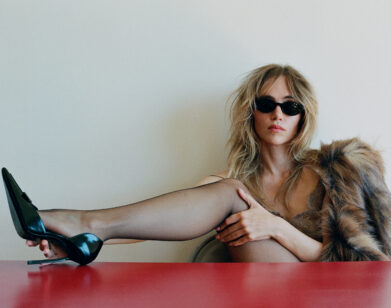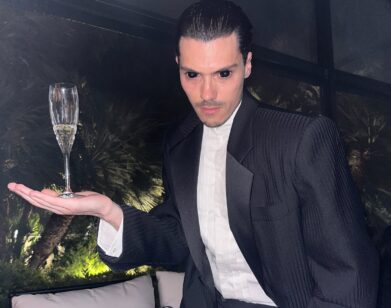ART
Pol Taburet Is Making All the Right Moves
When French painter Pol Taburet opened his first solo show in September 2020 at Balice Hertling gallery in Paris, a crowd of hundreds packed into the experimental project space in the decidedly un-bourgeois neighborhood of Belleville. “Family, friends, friends of friends, all showed up,” the 25-year-old artist explains with a smile. “And also I hang out with a few fashion people.”
He grew up just a block away from the gallery, in an apartment where he still lives with his mother. His road to becoming a full-fledged art sensation was as quick as it was auspicious: Local curator Ali Hassanzadeh met Taburet at the nightclub NF-34, where the artist, then a student at Beaux-Arts Cergy, worked as a bartender. Two summers later, Taburet was sending off a fleet of audacious, figurative paintings for galleries Balice Hertling and Mendes Wood DM to show at Art Basel.
As a child, Taburet, the youngest of three brothers, spent a lot of time with his mother, who took him to museums after school. He vividly remembers a visit to the historic Musée du Luxembourg when he was ten: “A [Giuseppe] Arcimboldo portrait was installed with a mirror below it, the effect was like a magic trick.” The artist’s father is a psychoanalyst, and bedtime stories meant Sufi poetry and a thick volume of Grimm’s fairy tales. “My parents put a lot of images in my head.”
On Taburet’s large-scale canvases, often set against a background of black acrylic, wondrous creatures emerge in quick, vaporous strokes of pastel stick and airbrush, much like the scene from the 1963 cult film Jason and the Argonauts, when an army of skeletons bursts from the earth. “I watched that film all the time with my brothers when I was a kid. It’s really badly done but it’s so beautiful, and that scene is crazy.”
With cartoon-like flatness, Taburet frames his otherworldly cast of characters with swathes of primary color, grainy pigment mixed with alcohol. The result is pleasurably disorienting. “Right now I’m really inspired by the carnival and the circus, an idea of transvestism and also charivari,” he says, referring to the raucous European folk parade. “I’m also making really augmented feminine bodies, characters in transformation between feminine, masculine, animal, and light—almost extraterrestrials.” He finishes his compositions by dressing up his cosmic figures in lush fabrics rendered in oil and paintbrush. “I want to juxtapose these metal bodies’ very pointed shape and shine with something softer and more tactile, like cottony Sunday sweats, pajamas like marshmallows.”
This fall, Taburet’s new works will be featured at a group show at Gladstone Gallery in New York and at François Pinault’s Bourse de Commerce in Paris.“It’s going to be a party, so my canvases need to be hung overhead,” as in on the ceiling. It’s a position that resonates with the artist’s love for religious painting and memories of Sunday Mass with his grandmother, who immigrated to France from Guadeloupe as a young mother. “I imagine the canvases installed up high in a religious way, like in a church.” –LILLIAN DAVIES
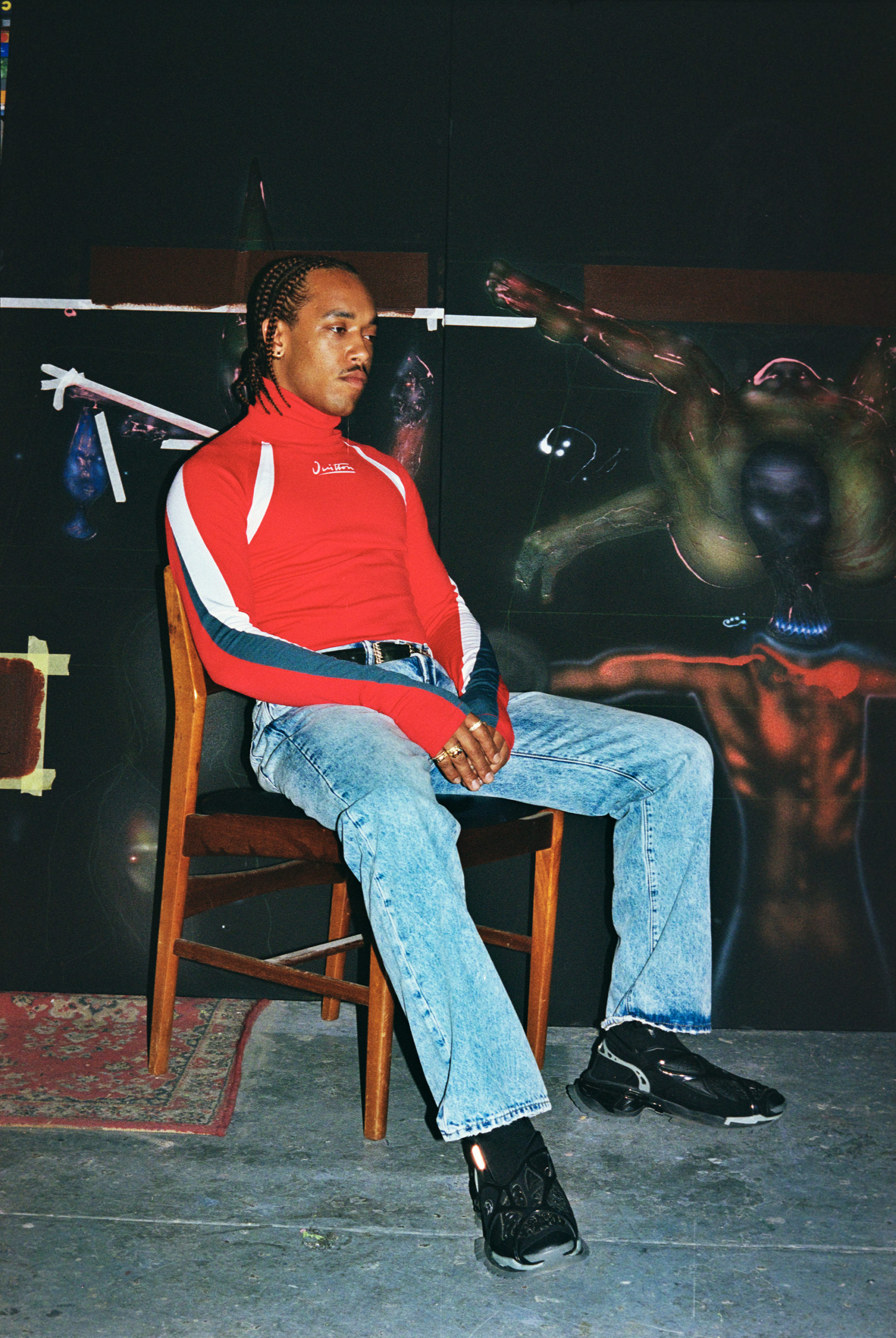
Top by Louis Vuitton Men’s. Jeans Stylist’s Own. Earrings, Rings, and Bracelets (Worn Throughout) Pol’s Own. Belt from Kiliwatch. Shoes by Rombaut.
———
Stylist Assistant: Ethel Coumbaras

